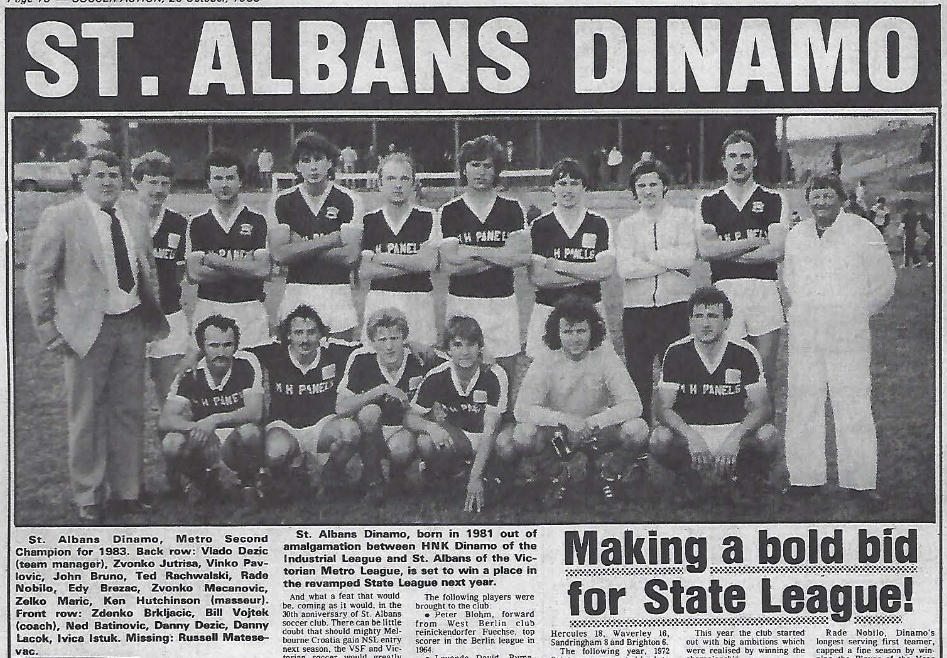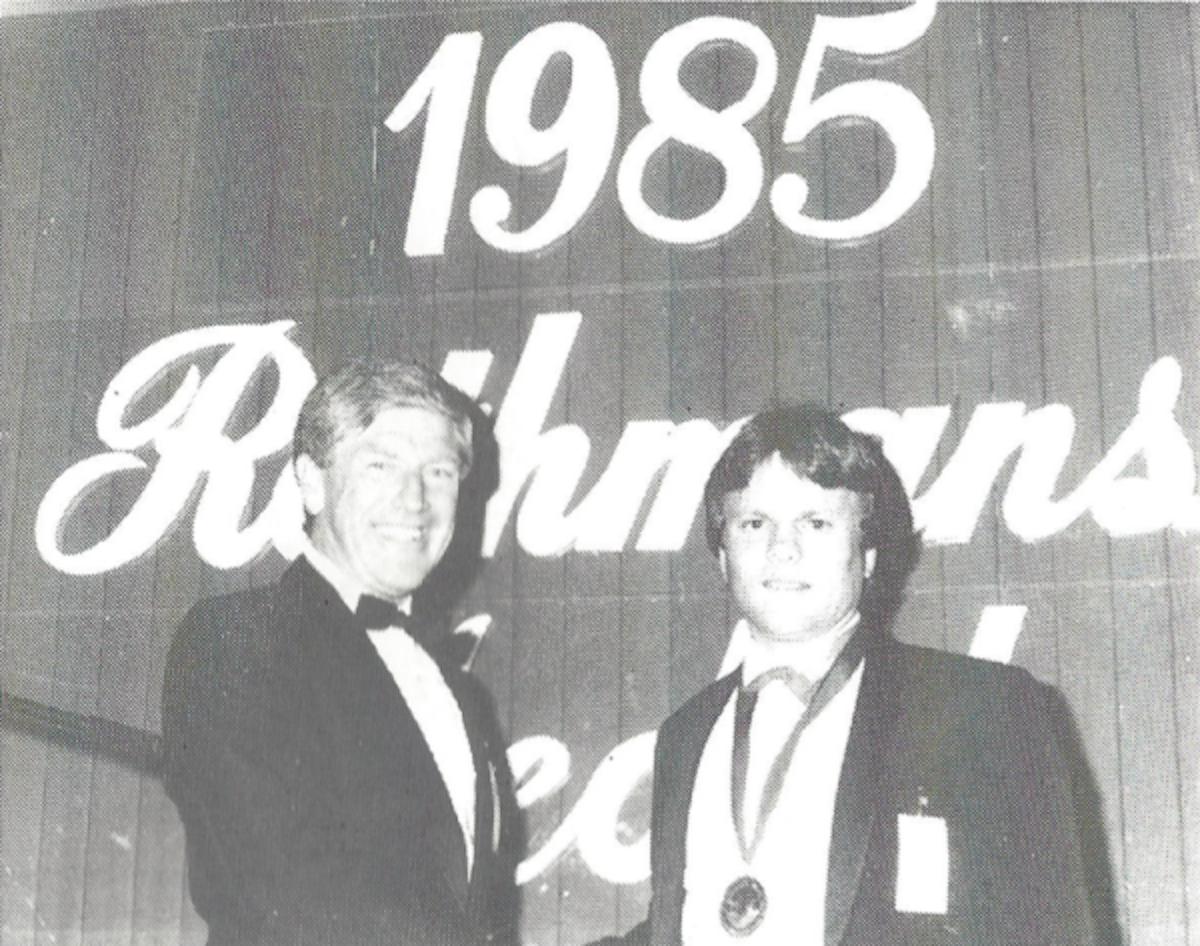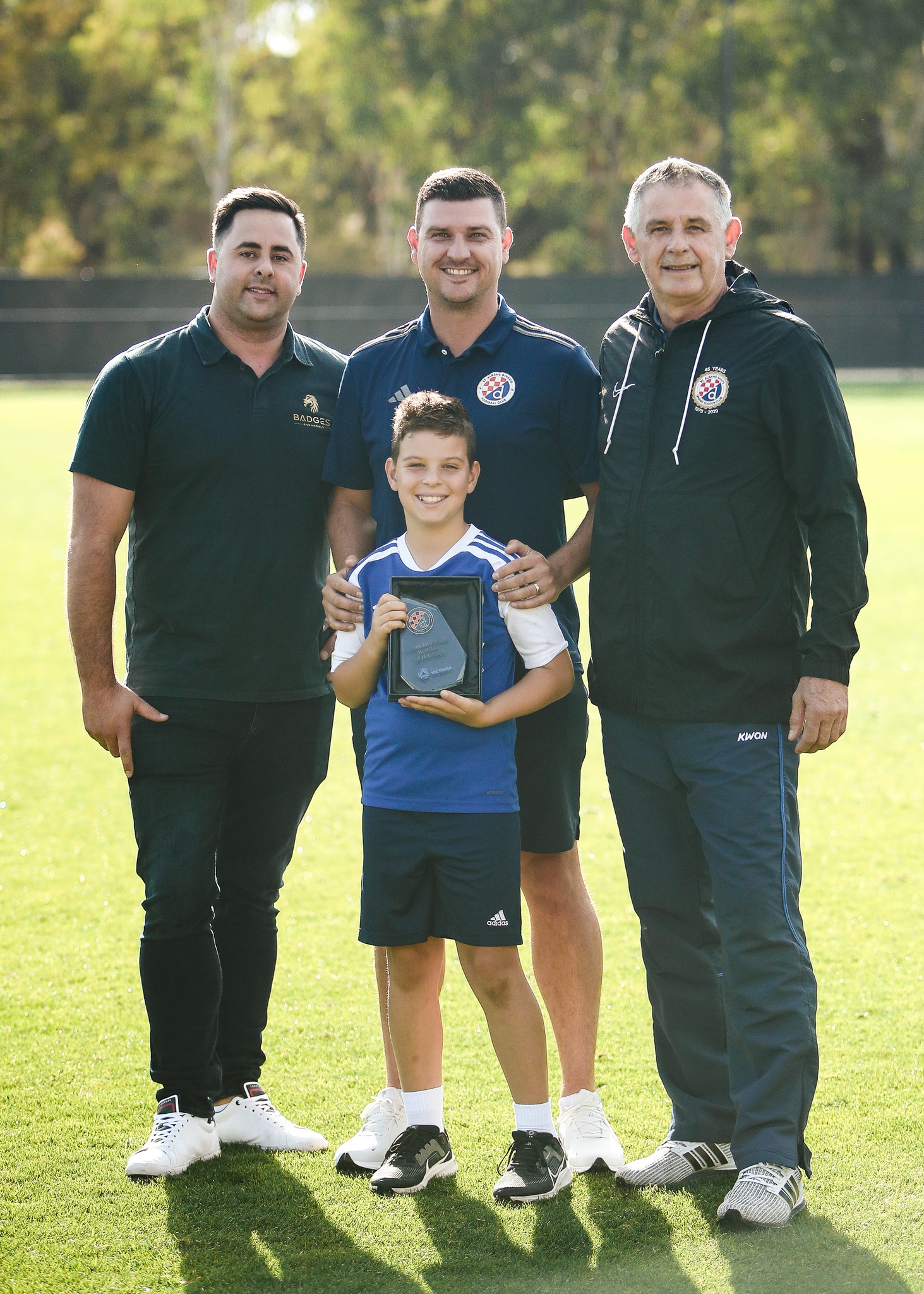In the first of a narrative series featuring clubs celebrating key milestones, Tony Persoglia explores the impact that a fledgling club in St Albans has had on a thriving local community.
It seems fitting that St Albans celebrate their 50-year anniversary on Saturday evening on the back of a clutch win against Melbourne Knights at Churchill Reserve last Sunday. With the path out of the relegation zone very much in their own hands, an iconic victory over their closest cultural rivals is the perfect result to kick-start an evening which will celebrate the club’s legacy.
The story of this proud club began under the guise of HNK Dinamo in late 1975, playing and training out of the humble surrounds of St Albans High School and later competing in the Industrial Soccer League. It won three consecutive championships without losing a match, outgrowing their amateur rivals with an attacking brand of football rarely seen at that level. The club seized an opportunity to merge with St Albans on the eve of the 1982 season, the German backed club struggling to pay its debts and maintain its status as a Victorian Soccer Federation (VSF) club.

The amalgamation not only brought Dinamo to their current home in Churchill Reserve, it provided them with the ability to attract a talented playing group that its newly acquired third-tier status warranted. Their first season in VSF competition featured immeasurable quality, players such as Billy McIntyre, Russell Matesevac and Branko Culina at the heart of their initial success. Their second witnessed the arrival of Socceroo and Victorian legend Billy Vojtek as player-coach, and St Albans Dinamo stormed to their first Metropolitan League Championship, their form that impressive and local support so strong that when the VSF restructured after the expansion of the National Soccer League (NSL) in 1984, they were elevated to the top-flight.
At first, St Albans struggled to adapt to the rigours of the Victorian State League, but the Saints finally clicked into gear in 1986 with an impressive run of form. With four rounds remaining they were in Championship calculations, sitting second on the table with just a single point separating them and defending champions Croydon City. However, a run of consecutive losses and draws put paid to their ambitions, finishing a disappointing fourth after a promising campaign fell apart at the final hurdle.
Some of the all-time legends of the club were at their best throughout this period. Branko Culina (1985) and Velimir Kupresak (1989) both won Gold Medals as the State League’s best-and-Fairest. Alongside them in this era were Micky Colina, Sveto Rastocic, Mate Grgic, Dennis Morovic and Eddie Kuzman. They formed the core of a team which appeared set for an unlikely promotion to the NSL in 1988, as the Saints sat third behind Heidelberg United and fellow high-flyers Thomastown with three rounds remaining. But history repeated itself with a loss to Morwell Falcons and consecutive draws against Bulleen and Caulfield City, all below them on the table, their chance at a maiden State League title evaporating as the Bergers took their position in what proved to be the final NSL winter season.

Another fourth-place finish followed in 1989 and as the league restructured again in 1991, St Albans maintained their position in the top-flight throughout the decade, adding players such as Marijan Vunderl, Joe Cuze, Zeljko Gagula and Richard Milanovic, not to mention the Pondeljak brothers Ollie and Tom, the latter becoming the club’s third player to win the Gold Medal in 1995. Arguably the club’s greatest achievement came in 1998, when it clinched the Victorian Premier League Minor Premiership under Head Coach Vlado Vanis, losing only five matches in a 26-round season and finishing five points clear of Altona Magic and the Bulleen Inter Kings.
By now, a Finals Series was introduced to determine the League Champions, and the Saints booked their place in the Grand Final thanks to a sole Harry Karl strike which proved enough to outlast the Magic at Knights Stadium. They were knocked out the following week by Bulleen Inter, one of the few opponents to garner a win against the Saints during the home-and-away season.
The Grand Final proved an engaging contest, with the Kings pulling away to a two-goal lead only for the Saints to draw level via an own goal and an equaliser from Kon Sianidis. When Danny Gnjidic gave Bulleen Inter the advantage with his second seven minutes from time, it proved too much of a mountain to climb for the Minor Premier, the Saints again falling short of a maiden top-flight Championship. It would have been a bitter pill for the club to swallow, given the VSF did away with the Finals the following season in favour of a first-past-the-post model to determine its Premier League Champion.
The club were relegated for the first time in its history in 2005, a final round loss to the Bergers at Olympic Village seeing them pipped by Sunshine George Cross, who managed a scoreless draw at Somers Street to save their own skin. What ensued over the next decade or so was a classic yo-yo tale, with promotions in 2010 and 2016, followed by relegations in the seasons immediately thereafter. A second NPL2 Championship under Kruni Razov was confirmed in 2019, and the Club has remained in the NPL despite changes at the helm and a series of middling campaigns, though the improvement in the quality of play under Cameron Watson is a striking call back to the iconic teams of the 1970s and 1980s.
What the honour roll and statistics don’t illustrate is the growth and change the club has undergone in 50 years. Churchill Reserve goes from strength to strength, a small yet uncompromising venue, where members have provided the home team unwavering support. Built by the club after its amalgamation, the Social Club has become a 400-patron strong venue and stands as a pillar and meeting place of the local Croatian community. The family nature of the club can be seen in the generations of players that have appeared on team sheets past and present – be they Duzel, Colina or Grgic – there is a pride associated with wearing the Dinamo shirt.
This is in clear evidence in the photo below, where former Club President Ivica Dolic is ably supported by son Kristian Dolic as Junior Club President, with grandson Zach Dolic a player in the club’s esteemed junior program. The Junior Boys have been a shining example of the club’s ethos, which has always favoured development over success.

Another illustration of this is the evolution of its Women and Girls program, which genuinely began to bear fruit in the 2000’s after a series of false dawns when the VSF took over the administration of the Junior Girls leagues in 1999. Now, the Saints sport a Girls program with eight teams across several age groups with a clear pathway to the Senior Women’s program.
Their Women’s State League 2 team has witnessed steady development under another favourite son of the club in Tom Pondeljak. A fourth-place finish in 2023 was followed by a third in 2024, and the team currently sits second at the half-way point of the current campaign. Ambitions for a move up to the third tier of the Women’s football pyramid are evidently based on slow and steady development rather than the procurement of high-profile talent to top-up its squad.
It may be a little while before the Women’s team joins their Male counterparts in the Victorian top-flight, but fifty years of football acumen goes a long way to building the legacy of any football club. As Ivica Dolic can attest, the evolution of HNK Dinamo to St Albans Saints is a story with the football community at its heart.
“For 50 years, Dinamo has been more than just a football club - it has been a community, a family, and a symbol of passion passed down through generations. From our founders to our current generation, the Dinamo spirit remains strong, built on dedication, resilience, and love for the game. Here’s to the next 50 years of football, friendship, and traditions.”
St Albans celebrate their 50th anniversary this Saturday evening, at a Sold Out Croatian Catholic Centre in Sunshine.
